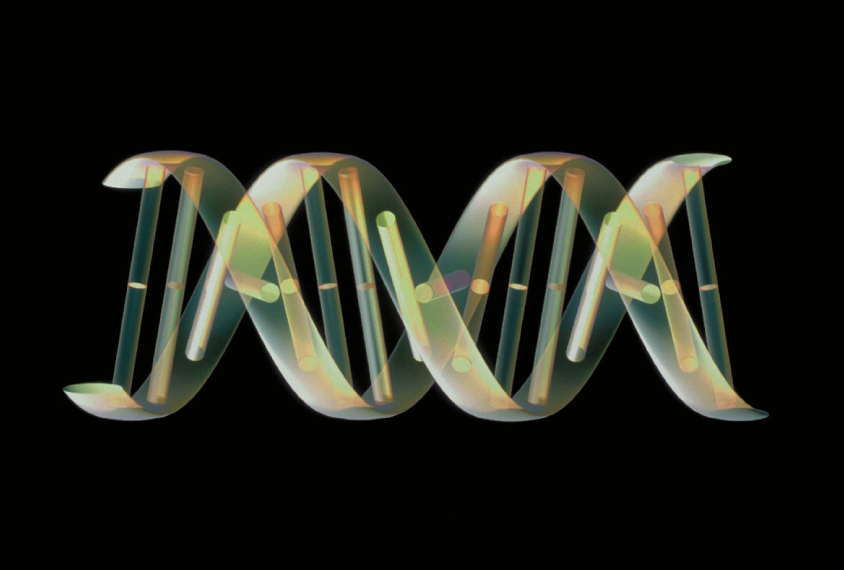
Gene therapy success raises hopes for approach in Rett syndrome
Success in a small clinical trial of spinal muscular atrophy suggests gene therapy might treat single-gene conditions related to autism.
Delivering a healthy copy of a gene mutated in children with spinal muscular atrophy dramatically improved the children’s survival and symptoms in a small clinical trial1. The trial’s success suggests gene therapy might treat single-gene conditions related to autism.
Spinal muscular atrophy type 1 (SMA1) stems from a mutation in a single gene, SMN1, leading to the death of motor neurons in the spinal cord. Children with the condition lose muscle strength over time, have difficulty swallowing and speaking, and eventually become unable to breathe. Most die or require a ventilator by age 2.
“We have developed a therapy that may potentially alter the course of this unforgiving condition,” says Jerry Mendell, principal investigator at the Center for Gene Therapy at Nationwide Children’s Hospital in Columbus, Ohio. “Future clinical trials can confirm whether this is a therapeutic option” for infants with SMA1, he says. Scientists at AveXis, a biotech company based in Bannockburn, Illinois, helped develop the treatment.
The findings raise hopes that a similar approach could treat other conditions caused by a single faulty gene, such as Rett syndrome, which is related to autism.
“The results are dramatic, and clearly this is a huge boost for gene therapy as a realistic therapeutic option in genetic brain disorders,” says Stuart Cobb, lecturer in neuroscience at the University of Edinburgh in Scotland, who was not involved in the study.
Meeting milestones:
Mendell and his colleagues injected 15 infants with a harmless version of a virus known as AAV9 that carried a replacement copy of the SMN1 gene. AAV9 can pass the tight barrier between the blood and the nervous system to reach motor neurons. The researchers hoped that the virus would deliver the gene to the motor neurons.
All of the infants received a single injection sometime between 1 and 8 months of age. The researchers gave 12 of the infants a high dose of the gene and the remaining 3 a lower dose. They tracked the children’s motor development until every child passed the age of 20 months, using the Children’s Hospital of Philadelphia Infant Test of Neuromuscular Disorders scale. (The scale ranges from 0 to 64, with higher scores indicating better motor function; it is rare for infants with SMA1 to score above 40.)
At the end of the trial, the infants were 20 to 30 months old. Although the study was only designed to test safety, the researchers saw striking effects. All of the children were alive at 20 months old, and none needed a ventilator on a permanent basis. By contrast, 92 percent of children with the condition typically need permanent mechanical ventilation at this age.
Many also reached motor milestones: In the high-dose group, 11 children could sit without help, 9 could roll over and 2 could crawl, stand and walk on their own; 11 could speak. All but one scored higher than 40 on the motor scale.
Motor function in the low-dose group also progressed but not enough to pass the standard milestones. The report appeared 2 November in the New England Journal of Medicine.
In September, AveXis researchers began recruiting a new group of 15 infants for a trial to test the therapy’s effectiveness.
Reversing Rett:
The team also plans to conduct trials of a similar gene therapy for Rett syndrome.
This rare condition is characterized by intellectual disability, motor problems and, often, autism. It is caused by mutations in a gene called MECP2, which gives rise to a protein needed by brain cells. A few years ago, researchers found that injecting AAV9 carrying the MECP2 gene into the brains of mice eased Rett-like symptoms and prolonged survival2.
But SMA1 and Rett have important differences, Cobb says. Rett’s effects are widespread in the brain, with half of the neurons missing the MECP2 protein. By contrast, SMA1 affects only motor neurons in the spinal cord.
“The SMA1 study benefited from the fact that one has only to target the neuromuscular system rather than delivering a gene to the entire brain, which is still a challenge,” Cobb says.
The brain is also sensitive to the levels of MECP2 protein. Although too little of the protein causes Rett, too much of it can lead to another condition, known as MECP2 syndrome.
“For Rett syndrome, we suspect that the levels may need to be more tightly controlled,” Cobb says.
Animal studies over the past year have been encouraging, however. Last month at the 2017 Society for Neuroscience annual meeting, a team at Ohio State University in Columbus reported that their gene therapy for Rett syndrome improves symptoms in mice and is safe in monkeys, an important step toward testing the treatment in people.
And in a study published in October, Cobb and his colleagues reported that delivering just a fragment of the MECP2 gene is enough to alleviate motor problems in mice. The researchers say using a gene fragment would provide more control over the amount of protein produced.
A better tactic may be to fix, rather than replace, the original copy of MECP2, says Gail Mandel, senior scientist at the Vollum Institute at Oregon Health and Science University in Portland. Mandel studies Rett syndrome, and was not involved with the SMA study. “This would obviate the worry about overexpression of the normal gene product,” she says.
Efforts on that front include editing the RNA for MECP2 and activating the copy of MECP2 on the inactive X chromosome3,4.
References:
Recommended reading

New organoid atlas unveils four neurodevelopmental signatures

Glutamate receptors, mRNA transcripts and SYNGAP1; and more

Among brain changes studied in autism, spotlight shifts to subcortex
Explore more from The Transmitter
Can neuroscientists decode memories solely from a map of synaptic connections?

AI-assisted coding: 10 simple rules to maintain scientific rigor
